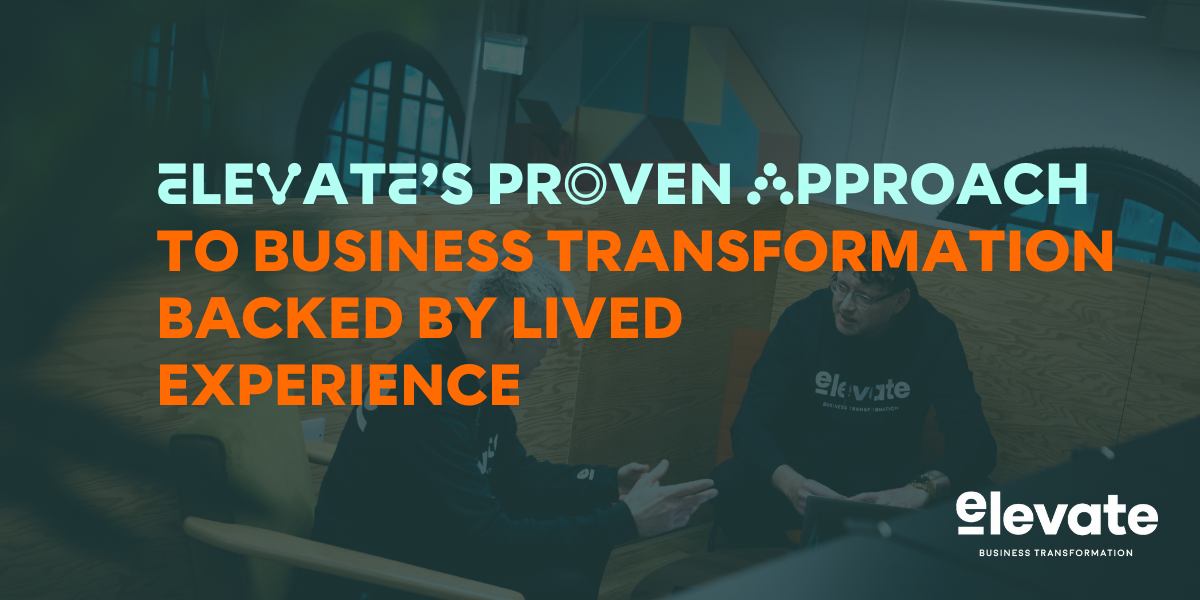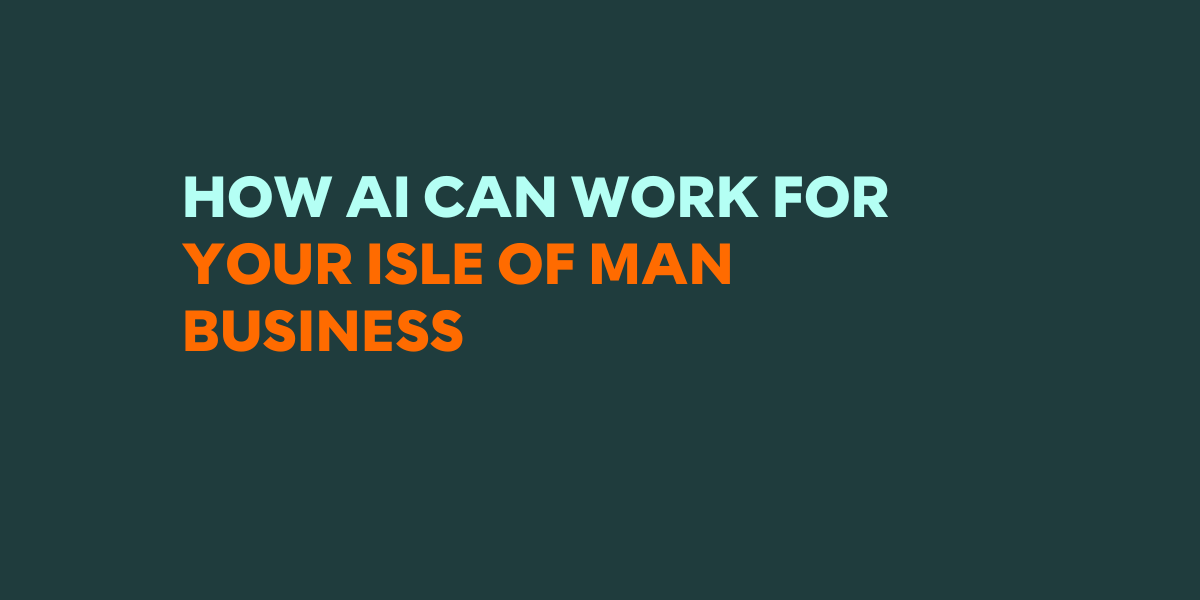Using the Cloud as a Platform for Digital Transformation
25 January 2021

Tim Cass, Elite Group IOM’s MD, discusses Using the Cloud as a Platform for Digital Transformation
Having worked in the IT and communications industry for over 25 years now, I’ve witnessed first-hand the exponential evolution of digital technology and cloud computing. As Managing Director of Elite Group IOM, I’ve overseen the implementation of the company’s ‘cloud-first’ strategy and the decommissioning of our data centre facility at Heywood House. It was the end of an era for Elite Group IOM but an exciting investment in the future of the company; indeed, staying ahead of the curve is the key to success in this fast-paced, dynamic industry.
With the business world increasingly embracing cloud technology, companies must also contend with another popular business strategy, one that seems to go increasingly hand in hand with cloud computing- that of ‘digital transformation’. While the IT industry is full of jargon and buzzwords, ‘digital transformation’ is certainly here to stay and is something your business should pay attention to. Indeed, fail to modernise and your business could find itself lagging behind your competitors in those important areas of collaboration, productivity, customer service and ultimately, profitability.
What Is Digital Transformation?
Digital Transformation refers to the integration of digital technology across all areas of a business, overhauling existing processes to optimise business operations and improve customer experience. Part of office life has always been embracing changes in technology. For example, the fax machine has largely been replaced by email, printed documents have been replaced by digital files and traditional PSTN telephony is being replaced by VoIP. These are all components of digitalisation, but it’s how this technology works together that truly defines ‘digital transformation’.
Digitisation Verses Digitalisation
Confusingly, when people talk about digital transformation, they often use two very similar words with quite distinct meanings. These are:
Digitisation – The conversion of analogue information into digital form e.g. converting a vinyl recording into an MP3 or scanning handwritten notes to make a PDF.
Digitalisation –Using digital technologies to change organisational structures and systems e.g. ditching handwritten or paper-based processes entirely and going paperless.
Digital transformation uses both these strategies but takes them one step further. Indeed, a successful transformation isn’t only about embracing the latest digital technology; it involves a complete cultural shift and a fundamental challenge of your current business processes. The overall aim is to create an agile and reactive business that’s ready to embrace the latest technology and is constantly looking to improve operational efficiency. That’s not to say that implementing digital transformation is easy; as with most process overhauls, getting employees and colleagues 100% onboard can be challenging.
With research suggesting that around 70 percent of change and transformation projects fail, there’s no denying that a digital transformation comes with business risk; time, money and reputation are on the line after all. Get it right though, and the rewards for a successful implementation are plentiful. This is where a solid strategy comes into play. How a digital strategy is rolled out depends on the company, its attitudes and its desired outcomes. Here’s a few general tips to get you started:
Explain and Explain Again
One of the greatest challenges facing your digital transformation project is getting employees onboard. As such, you need to tell them how the change will be good for them. Start by assuming employees have no knowledge of the technology you’re looking to introduce, before giving them a complete explanation of exactly what it is and what it can do.
Alleviate Fear
Change can often lead to fear. In terms of digital transformation, employees may feel that they won’t understand or be able to use the new technology. Ease these concerns by showing them case studies of previous digital projects or of similar plans undertaken by other businesses. This will demonstrate that change is possible and that they can succeed with the help of new technology.
Encourage Participation
Nothing beats hands-on experience and active contributions when it comes to getting people used to new technology. Most good sellers will offer demonstrations and seminars to introduce staff to their products. By getting employees acquainted with a new technology before using it, you help to ensure a smooth transition.
Keep Employees Up To Date
Any project is subject to change. That’s why it’s vital that you are as transparent as possible about the digital transformation, updating employees of any changes or deviations as and when they happen. Doing this will help you decrease confusion and improve employee support.
Lead By Example and Support New Processes
The technology you want to introduce will replace or expand existing processes. Make sure you persuade employees to adopt these changes by welcoming them yourself. If you continue to use outdated technology, your staff are likely to do so too. Leading by example will make employees more likely to get behind the new ways of working.
Engage a Trusted Technology Partner
If you are starting a digital transformation from scratch, it can be difficult to know how or where to start. With a number of key elements to consider, you may wish to reach out to industry experts who are experienced in implementing digital transformation to support and manage the process on your behalf. From fundamental changes in day-to-day operations to ongoing managed services, consulting an experienced provider allows your business to benefit from technology, without the hassle of managing it yourself or suddenly employing a large IT team.
Benefits of Embracing Digital Transformation
After a difficult year for businesses, initiating a complete overhaul of your business processes can seem daunting and expensive. Yet there are many business benefits to embracing digital transformation:
- Improved Productivity
Embracing digital transformation allows you to increase productivity levels across your business. Digitalisation lends itself to the automation and integration of previously manual and inefficient processes, helping your employees work with greater efficiency and increased productivity. At a time when businesses need to get the most out of their business operations, eliminating process inefficiencies has never been more important.
- Increased Profitability
According to a study carried out by the SAP Center for Business Insights and Oxford Economics, 80% of organisations that have completed digital transformation have experienced an overall increase in profits. While successful digital transformation requires long-term investment in digital technology and cultivating the right company culture, businesses that achieve complete digitalisation can save money on previously inefficient processes and benefit from improve profitability through increased productivity.
- Improve customer experience
One of the key benefits of going digital is the ability to improve customer experience and communication. Digital technology is powering a greater understanding of customers and clients; companies now have access to data and information that allows them to offer a tailored, personalised service. When it comes to communication, integrating AI technology in the form of a ‘chatbot’, for example, allows businesses to provide automated responses to customer enquiries, keeping customers happy with targeted, instant responses.
- Increased agility
In a fast-paced, corporate environment, the ability to react quickly and adapt to market changes has never been more important. Embracing digitalisation at all levels of your business builds agility into your processes, meaning you can quickly adapt to any changes or developments that occur in your industry or market, overcoming them with ease while your competitors remain held back by outdated technology.
- Future-proof your business
A study by Harvard Business found that 80% of business leaders believe that their industry will be disrupted by digital. Digital technology is evolving at an exponential rate, and if your business doesn’t keep up, it’s bound to get left behind. Take the Blockbuster-Netflix example. Blockbuster failed to innovate when it had the chance, and subsequently went out of business with the advent of digital streaming. The lesson here? Innovation is vital to business survival.
How Cloud Computing Supports Digital Transformation
In many ways, the two go hand in hand. That’s to say that a business can implement cloud computing without digital transformation, but digital transformation is impossible without the Cloud. Having a solid cloud foundation is an essential launchpad for any meaningful digital transformation; it provides the flexibility, scalability and interoperability that businesses need to succeed. Indeed, the Cloud enables businesses of all sizes to take advantage of technology that would have previously been beyond their budget or immediate skillsets, opening up a world of IT opportunities that were previously reserved for a privileged few.
In many ways, COVID-19 and remote working have highlighted the real need for a meaningful digital transformation of the business world. Embracing digital ways of working shouldn’t stop now we’ve returned to the office, however. We should see this as an opportunity to continue modernising, embracing cloud computing and digital transformation as the key to digital maturity. With the world more reliant on digital technology than ever, there’s never been a better time to invest in the future of your business.
For more information on how Elite Group IOM can help your business flourish through technology, contact us today.





